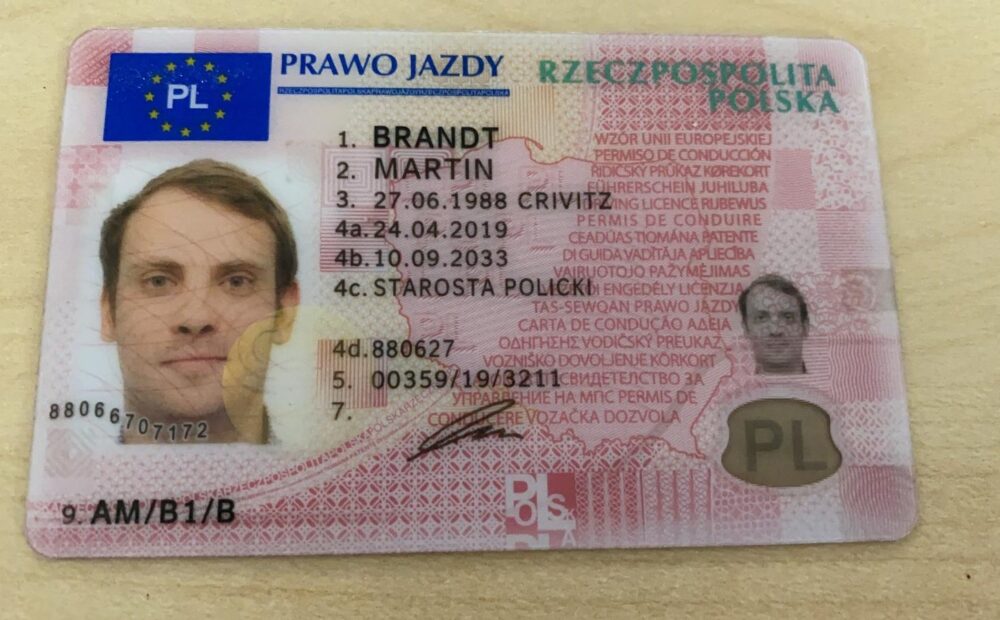Navigating the Driving License Process: A Comprehensive Guide
Getting a driving license is a substantial milestone in many individuals's lives, marking a newfound self-reliance and the capability to navigate the world on 4 wheels. Nevertheless, Karta Xpress Poland can be difficult, especially for novice candidates. This article intends to supply an in-depth, detailed guide to the driving license process, ensuring that readers are well-prepared and informed every step of the way.
Understanding the Driving License Categories
Before diving into the application process, it's important to understand the various types of driving licenses readily available. The classifications can vary a little depending on the country, but usually, they include:
- Learner's Permit: This is the initial phase for new chauffeurs. It allows individuals to practice driving under the supervision of a licensed motorist.
- Provisional License: Also referred to as a probationary license, this is provided to brand-new drivers who have actually passed their driving test but are still based on particular constraints.
- Full Driver's License: This is the last, where all constraints are lifted, and the driver is completely licensed to run a car individually.
Step-by-Step Guide to Obtaining a Driving License
Action 1: Meet the Eligibility Requirements
The very first action in obtaining a driving license is to ensure you meet the eligibility requirements. These usually consist of:
- Age Requirement: Most nations require applicants to be at least 16 years old to request a student's authorization and 18 years of ages for a full motorist's license.
- Residency: You need to be a homeowner of the state or country where you are getting the license.
- Vision Test: You might need to pass a vision test to ensure you have appropriate vision for safe driving.
Step 2: Study the Driver's Handbook
Before requesting a student's license, it's essential to study the driver's handbook. This manual covers traffic laws, road signs, and safe driving practices. Many states supply the handbook online or at local DMV offices.
Action 3: Apply for a Learner's Permit
To make an application for a learner's permit, you will need to:
- Visit the DMV: Go to your local Department of Motor Vehicles (DMV) or their website to use.
- Offer Documentation: Bring the needed files, which generally consist of proof of identity, residency, and date of birth.
- Pass the Written Test: Take and pass the composed test, which examines your knowledge of traffic laws and safe driving practices.
- Pay the Fee: Pay the application charge, which varies by state.
Step 4: Practice Driving
As soon as you have your student's license, it's time to start practicing. You must drive under the supervision of a certified motorist who is at least 21 years old. It's suggested to practice in a variety of driving conditions, including daytime, nighttime, and various weather condition conditions.
Step 5: Schedule and Pass the Driving Test
After acquiring sufficient driving experience, you can schedule your driving test. The test typically consists of:
- Pre-Trip Inspection: Inspect the vehicle for security problems.
- Driving Skills: Demonstrate your ability to drive safely, follow traffic laws, and carry out specific maneuvers such as parallel parking and turning.
- Post-Trip Evaluation: Answer any concerns the inspector may have about your driving.
Action 6: Obtain Your Driver's License
If you pass the driving test, you will receive a provisionary license right away. You can then request a complete motorist's license after a specific duration, which varies by state. Some states might need extra tests or classes before providing a complete license.
Frequently Asked Questions (FAQs)
Q1: How long does it take to get a chauffeur's license?
A: The process can take a number of months, depending upon how rapidly you complete each step. It usually takes a few weeks to study and pass the composed test, and then numerous months to acquire sufficient driving experience before taking the driving test.
Q2: Can I take the written test numerous times if I stop working?
A: Yes, you can retake the written test. However, there might be a waiting duration and a cost for each attempt.
Q3: What happens if I stop working the driving test?
A: If you stop working the driving test, you can retake it after a specified waiting period. It's a good idea to take extra driving lessons or practice more before retaking the test.
Q4: Can I use a learner's permit to drive alone?
A: No, a student's authorization just allows you to drive under the guidance of a licensed chauffeur who is at least 21 years of ages.
Q5: What are the limitations for a provisional license?
A: Restrictions can vary by state however may consist of restrictions on driving at night, limitations on the number of travelers, and requirements for a zero-tolerance policy for alcohol.
Tips for a Successful Driving License Application
- Start Early: Begin the procedure early to avoid rushing and ensure you have adequate time to prepare.
- Practice Regularly: Consistent practice is crucial to building confidence and improving your driving skills.
- Stay Calm: During the driving test, remain calm and focused. Take deep breaths and follow the examiner's instructions.
- Review the Rules: Regularly review traffic laws and safe driving practices to remain updated.
- Look For Professional Help: Consider taking driving lessons from a professional instructor to get expert guidance and feedback.
Getting a driving license is a substantial achievement that opens up new opportunities and duties. By following the steps described in this guide and preparing completely, you can navigate the process with confidence and become a safe, accountable chauffeur. Remember, the journey to getting your license is simply the beginning of a long-lasting commitment to safe driving.
This thorough guide intends to supply a clear and helpful summary of the driving license procedure, ensuring that readers are well-prepared and informed every action of the way.

